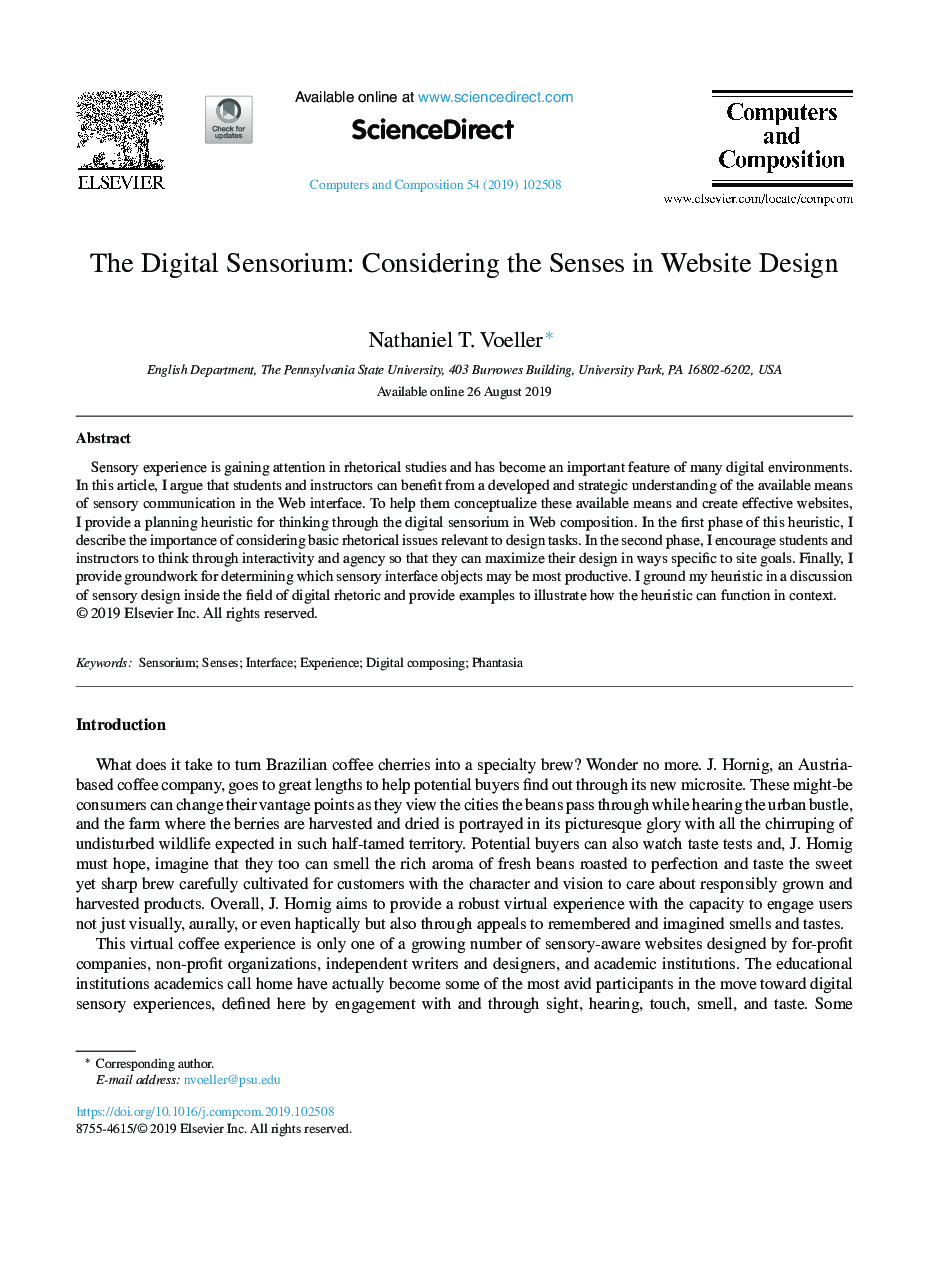| Article ID | Journal | Published Year | Pages | File Type |
|---|---|---|---|---|
| 13426839 | Computers and Composition | 2019 | 18 Pages |
Abstract
Sensory experience is gaining attention in rhetorical studies and has become an important feature of many digital environments. In this article, I argue that students and instructors can benefit from a developed and strategic understanding of the available means of sensory communication in the Web interface. To help them conceptualize these available means and create effective websites, I provide a planning heuristic for thinking through the digital sensorium in Web composition. In the first phase of this heuristic, I describe the importance of considering basic rhetorical issues relevant to design tasks. In the second phase, I encourage students and instructors to think through interactivity and agency so that they can maximize their design in ways specific to site goals. Finally, I provide groundwork for determining which sensory interface objects may be most productive. I ground my heuristic in a discussion of sensory design inside the field of digital rhetoric and provide examples to illustrate how the heuristic can function in context.
Keywords
Related Topics
Social Sciences and Humanities
Arts and Humanities
Language and Linguistics
Authors
Nathaniel T. Voeller,
